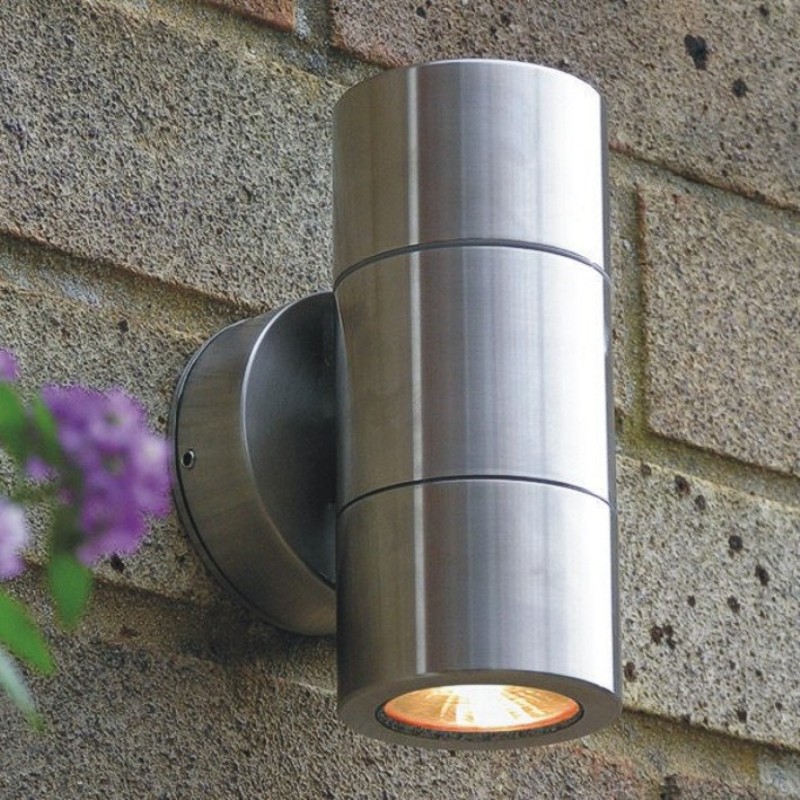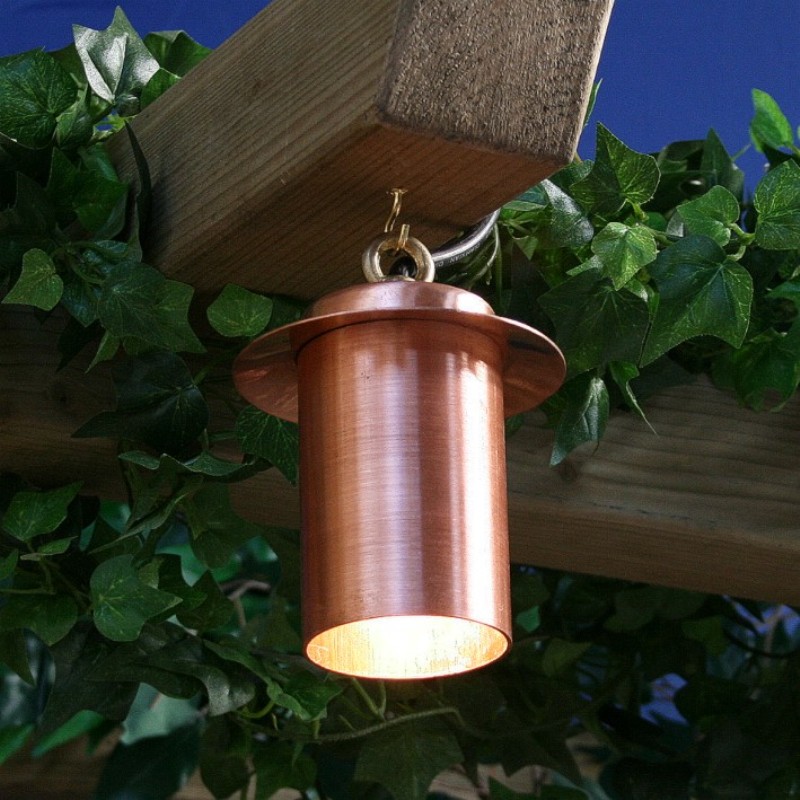



This is a big topic as the number of combinations is infinite, so here we try to give a few tips to point you in the right direction. For large patio areas, combinations of wall lights and bollard lights or spreadlights are the norm and, provided this is done with taste and restraint, can create a satisfactory mood when preferred plus higher light levels when needed for activity and security. Elipta Compact bollard lights are 240v spike-mount garden lights which use warm white compact fluorescent lamps to provie all-round illumination: an 11w lamp is often bright enough around a terrace area - as bright as a 40w tungsten lamp. They need to stand up high enough above planting to perform the lighting job and still be visually acceptable - a compromise to be achieved. Elipta's teak bollard lights are also a popular choice: timber garden bollard lights have a natural appearance and are available in a range of round and square shapes, with opal diffuser or with glare louvres. They are a taller option and accept a fluorescent lamp up to 20 watts for brighter lighting. If you don't have flanking walls from which to light steps, or trees and structures on which to mount downlights of one sort or another, then you may end up using bollard lights or spreadlights to fill in - see the page on "Paths and drives" for more suggestions.
Downlighting from below the eaves of a house can be an effective way of lighting paths, terraces and planting around the house to create a welcoming feel; it can also produce a "grazing" effect where the lighting of a surface from an oblique angle emphasises texture, in this case roughness in brick and stone walls and the patterns of the mortar joints. Downlights & wall mount spotlights should be discreet and match either the mounting surface or other external fittings as closely as possible; Elipta's attractive modern Compact wall spotlight range includes compact 240 volt versions for mains wiring installation on house walls as well as 12 volt versions for use on garden structures. They are available in 316 stainless steel (E4212), copper (E4222), black (E4232), rustic brown (E4272) and white (E4252). Their wall mount up and downlight range produces great grazing effects with dual 35watt lamps - most other 240v fittings of this type allow only dual 20 watt lamps. For lighting from a pergola onto a patio or alfresco dining area, you might prefer 12v spotlights for ease of wiring and the rustic brown finish to fix on wooden beams. For downlighting an alfresco dining area, use a 20 watt wide beam lamp in a downlight from a crossbeam or overhead arbour to project a circle of light onto the table. Lighting patios from structures may require combinations of downlights as well as uplights to add contrast and emphasis, by uplighting or downlighting stone pillars for example. Microspot adjustable wall spotlights are 12v for mounting on garden structures: the copper version weathers to match brown timber and dark red brick and is small enough to be fairly unobtrusive. They can also be fitted with a glare louvre as standard, which is a useful accessory near a seating area
If you lighting a facade around a terrace, remember that in walkover locations you need to be careful to avoid a hot lens caused by halogen lamps of more than 20watts, so consider using "MODULA" recessed uplights with energy-efficient l.e.d. lamps or, for a wider effect 240v compact fluorescent spotlamps. If you have trees rather than structures around the patio area you wish to light, "moonlighting" from a tree is a seriously atmospheric option; small hanging lights strapped to tree branches project dappled light down through intervening branches, throwing the shadow of foliage and twig onto the area below. A tree mount spotlight is a trunk-mounting alternative if access is difficult to strap lights onto branches immediately over the terrace area. Supplement this with garden candles or oil lamps on the table for ambience and a little variety. If there are no structures or trees but there are raised beds or low flanking walls, then steplights are a good way of providing low level ambience - see the page on "Steps" for suggestions.
Use 20-35w lamps for downlighting from pergolas, 35-50w lamps for downlighting from higher mounting points and in trees. For lower mounting heights of 2.5 to 3 metres, use internal glare louvres to limit discomfort arising from a casual glance upward at the light source. A frosted lens softens and diffuses light from a 20w lamp in an overhead downlight mounted on a pergola or similar lower structure. Powersaver lamps provide on energy saving alternative and led lamps are now available with wider 60 degree beams to provide a long-life solution,